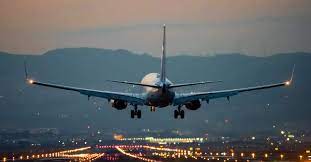MUMBAI, May 26: Asia-Pacific and the Middle East aviation industry is experiencing green shoots of recovery amid domestic passenger traffic making considerable progress even as international traffic largely remains stagnant, according to the Airports Council International Asia-Pacific (ACI APAC) quarterly report.
The industry showed encouraging signs of recovery in the first quarter of 2022— capacity was rebuilding in many parts of APAC and the Middle East ; domestic passenger traffic made considerable progress; cargo growth proved to be resilient and was above pre-pandemic levels, said the report.
The report has been prepared in partnership with global engineering, management and development consultancy Mott MacDonald.
Despite the subdued pandemic environment, airports in the region continued to provide a safe and high service quality for the benefit of their passengers.
However, ACI APAC said travel restrictions ranging from mandatory quarantines in designated facilities to pre-departure and on-arrival testing, suspension of international air travel in some parts of the region as well as geopolitical conflict and subsequent impacts on macroeconomic factors have been detrimental to the overall growth of aviation.
“Analysis shows that travel restrictions have to a large degree failed to prevent the spread of COVID-19 mainly due to the high infectious nature of the Omicron variant and have turned out to be a deterrent for the recovery of aviation, impacting the economy of the region,” said Stefano Baronci, Director General at ACI APAC.
Cargo business proves on the contrary the leading role that APAC plays in the global economy, he said, adding, despite an improving trend, airport financial margins remained far below pre-pandemic levels and are economically unsustainable.
It is therefore time to remove ineffective restrictions and enable nations to accelerate their economic growth, he emphasised.
To achieve a truly sustainable recovery from the slump caused by COVID-19, cooperation and the establishment of standards that harmonise the processes for international travel between states are crucial.
“The global recovery will only be realised with the escalation of vaccination campaigns, development of digital health passes, and supportive policies from governments,” Baronci added.
Boosted by high rates of vaccination (70 per cent or above in the six largest aviation markets), since early 2022, many countries have been easing entry requirements, but parts of emerging and developed East Asia have kept quarantine requirements in place.
In APAC and the Middle East, currently 20 countries have no significant entry restrictions.
Stating that China plays a key role in the region as most of South East Asian airports and Australia are largely dependent on Chinese travellers, the report said the reopening of international air travel to and from China will not only accelerate growth in the region, but also provides a thrust to the industry across the globe.
According to the report, while domestic passenger traffic has made considerable progress with the easing of restrictions within some countries, international traffic, which is the key revenue driver for airports in terms of passengers’ commercial spend, has remained largely stagnant due to curbs and geopolitical tensions in and around the region.
Considering airline seat capacity as a proxy to measure the flow of passengers, as compared to 2019 Q1 data, domestic traffic has made a recovery of 92 per cent of pre-pandemic levels, but international seat capacity was still down 67 per cent during Q1 this year as travel restrictions, quarantine and testing requirements continued to hamper the growth of air travel, it said.
The total domestic seat capacity is expected to recover to levels exceeding 2019 by Q2 2022 by approximately + 4 per cent, driven largely by emerging East Asia (notably China), which has 15 per cent more departing seats scheduled in 2022 than in 2019.
The Middle East domestic capacity remains below 2019 levels. In contrast, total international seat capacity in 2022 is 49 per cent below 2019 levels, with significant variation between sub-regions, as per the report.
South Asia and the Middle East are only down about 15 per cent from 2019 levels, while emerging East Asia is still down by 81 per cent, and is once again experiencing stringent travel restrictions, it stated. (PTI)


